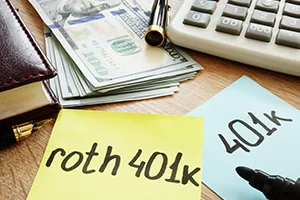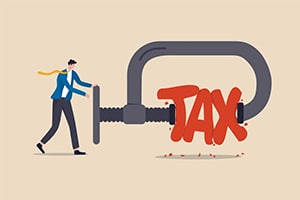
Business Advisory Services
Everything you need to help you launch your new business entity from business entity selection to multiple-entity business structures.
Hey - Our site just had a makeover and we are sorting through the hiccups!
Hey - Our site just had a makeover and we are sorting through the hiccups!

Everything you need to help you launch your new business entity from business entity selection to multiple-entity business structures.

Designed for rental property owners where WCG CPAs & Advisors supports you as your real estate CPA.

Everything you need from tax return preparation for your small business to your rental to your corporation is here.

WCG’s primary objective is to help you to feel comfortable about engaging with us
Posted Saturday, September 15, 2018
Table Of Contents
What are your options with an old 401k? It doesn’t take much of a Google search of 401k rollover options to find three basic options, with a ton of exceptions and pitfalls. And to make matters worse, the 401k rollover to IRA option is pushed hard by investment firms and financial advisors looking to pick up a quick buck on account fees. The truth behind 401k rollover options and 401k rollover rules is the classic accountant response to everything- it depends. So let’s jump into this topic.
Generally speaking you must be separated from a former employer to transfer or roll your 401k into another qualified retirement account or plan, such as a self employed 401k. There are some 401k plans that allow for an in-service 401k rollover meaning that you can take money out even while working for the plan sponsor (i.e., current employer). Not rare, but not common either. So, for the sake of brevity let’s consider the three following 401k rollover options-
If your balance is under a $1,000 you might be forced to move the money. Otherwise, you can leave the money in the old 401k plan. This makes sense for a handful of reasons. First, you are still unemployed and have no option. Or, you are employed and you want to transfer the money to your new employer but need to wait for open enrollment.
Or perhaps the 401k is performing exceptionally well, has a decent array of funds and investment choices, and fees are low. Another consideration along these lines is not all 401k’s are the same. Your former employer might have a much larger plan, and can command lower fees and better choices. Or vise-versa. See, even this option has a “it depends” caveat.
Be careful of the financial advisor or certified financial planners who categorically tell you to perform the 401k rollover to IRA move. It might not be suitable for you.
This option has gained popularity recently for several reasons. Large investment firms wanted to keep assets in house- for example, if a person quits and transfers his/her 401k into an IRA, the plan administrator just lost money. But, if the newly hired person fills the position just vacated, perhaps he/she can also fill the gap in plan assets that just left.
Another reason this is popular is the dreaded 401k loan. If borrow against your 401k and then separate from the company, your loan can be deemed an early distribution subject to 10% 401k withdrawal penalty and taxes. However, if you roll your 401k into your next employer’s 401k, in most cases the loan can hitch a ride to the next 401k plan. Nice.
Similarly to the Leave it Alone option above, not all 401k plans are the same. You might be going from a lousy 401k plan to a great 401k plan. Do your homework.
Keep in mind that under ERISA rules, 401k plans are creditor proof in many cases. In 2005, the United States Supreme Court ruled that IRAs also have similar credit protection. Previously IRAs or other non-ERISA retirement vehicles were affected by bankruptcy proceedings, garnishments and other attachments. Unpaid taxes, fraud and a few other exceptions exist, but please consider that a 401k and an IRA is nearly bulletproof. A huge caution here- Solo 401k plans or self employed 401k plans only benefit the owner and do not pass the anti-alienation provision in ERISA. While the Federal government still offer protection for Solo 401k’s during bankruptcy, states vary across the board from Yes to No to Maybe. Check this out!

Compare small business retirement options with bankrate’s calculator for tailored insights.
Not everyone is self employed, but if you are, or even if you have a side-business in addition to your regular job, you might want to roll your old 401k into your solo 401k plan. It doesn’t take much to be self-employed, and the costs of running your own 401k are similar to IRAs.
Take a moment to read more about 401k plans for the self employed here.

Read about retirement planning, defined benefit plans, deferrals, and contributions.
There are some reasons rolling your old 401k into an IRA might be a good idea. An IRA gives you a ton of investment options. First, unlimited mutual funds, stocks and bonds. Second, you could create a self-directed IRA to buy a rental or start a business. A self-directed 401k exists but it takes a lot of work, requires certain entity formations and trust accounts, and has a high setup and annual administration fee.
Getting your poop in a group is another reason. In other words, you might be motivated by basic housekeeping to take a handful of orphaned 401ks and IRAs, and combine them into one retirement account. Most financial advisors can only offer the best possible advice if your retirement accounts are within his/her domain.
Some downsides to IRAs include potentially higher fees and lack of borrowing provisions. So before you blindly follow the advice of a financial advisor telling you the only option is to transfer your 401k to an IRA, know the 401k rollover rules and options.
If you have company stock in your 401k, it might be a tax-advantaged to pull the stock out of the 401k plan, pay your taxes on the basis of the stock and only pay capital gains on the increase in value. You’ll hear a term called net unrealized appreciation (NUA). Here we go- you have a bunch of company stock with a cost basis of $10,000 but the market value is $200,000. Nice. If you pull out the stock, you pay ordinary income taxes on the basis of $10,000 but only capital gains taxes on the $190,000. Big savings.
Conversely, if you transfer your 401k plan’s stock into an IRA and then withdraw the money in the form of a distribution, you will pay ordinary income taxes on the whole amount. Not good.
Another consideration is that you might want to convert pre-tax 401k dollars into Roth IRA dollars, and you can do that seamlessly. Be careful here too. WCG (formerly Watson CPA Group) has seen some financial advisors screw this up by converting too much at once, and sending you into the next marginal tax rate unnecessarily. Careful tax planning is necessary.
It also behooves us to mention that you can always withdraw the money. But if you are under 59 1/2 you will pay a 10% penalty plus income taxes. There are exceptions to the 10% penalty such a hardship withdrawal, and you if you are retired early at 55 there might be provisions available to you excluding you from the penalty as well.
Table Of Contents

Tax planning season is here! Let's schedule a time to review tax reduction strategies and generate a mock tax return.

Tired of maintaining your own books? Seems like a chore to offload?
Did you want to chat about this? Do you have questions about 401k Rollover Options? Let’s chat!
The tax advisors, business consultants and rental property experts at WCG CPAs & Advisors are not salespeople; we are not putting lipstick on a pig expecting you to love it. Our job remains being professionally detached, giving you information and letting you decide within our ethical guidelines and your risk profiles.
We see far too many crazy schemes and half-baked ideas from attorneys and wealth managers. In some cases, they are good ideas. In most cases, all the entities, layering and mixed ownership is only the illusion of precision. As Chris Rock says, just because you can drive your car with your feet doesn’t make it a good idea. In other words, let’s not automatically convert “you can” into “you must.”
Let’s chat so you can be smart about it.
We typically schedule a 20-minute complimentary quick chat with one of our Partners or our amazing Senior Tax Professionals to determine if we are a good fit for each other, and how an engagement with our team looks. Tax returns only? Business advisory? Tax strategy and planning? Rental property support?

Everything you need to help you launch your new business entity from business entity selection to multiple-entity business structures.

Designed for rental property owners where WCG CPAs & Advisors supports you as your real estate CPA.

Everything you need from tax return preparation for your small business to your rental to your corporation is here.

WCG’s primary objective is to help you to feel comfortable about engaging with us

